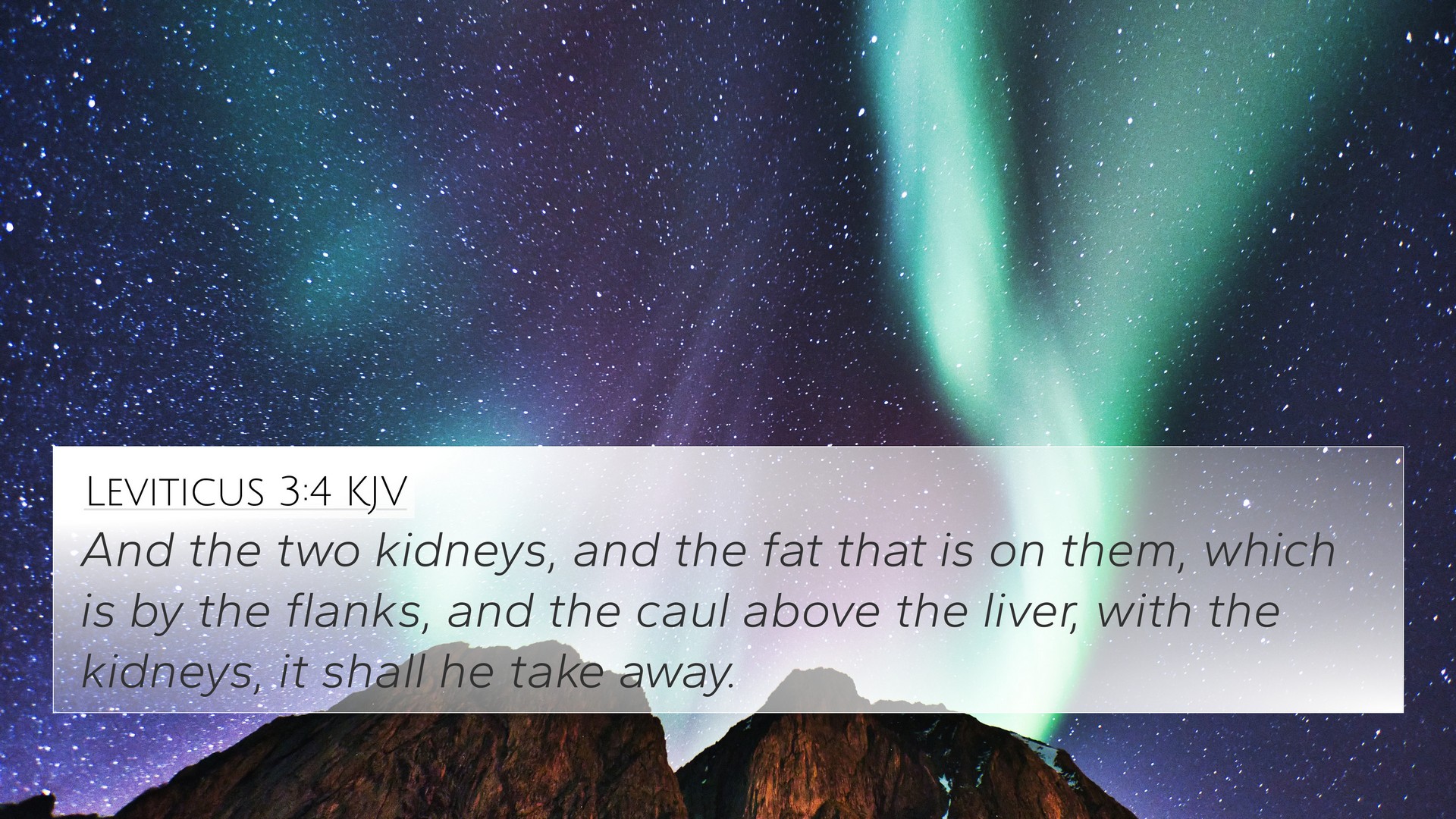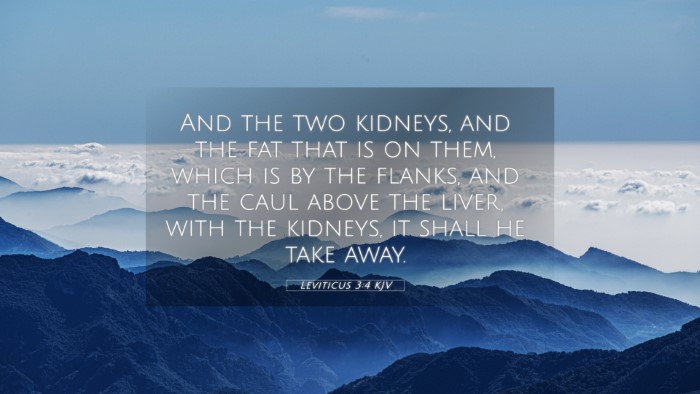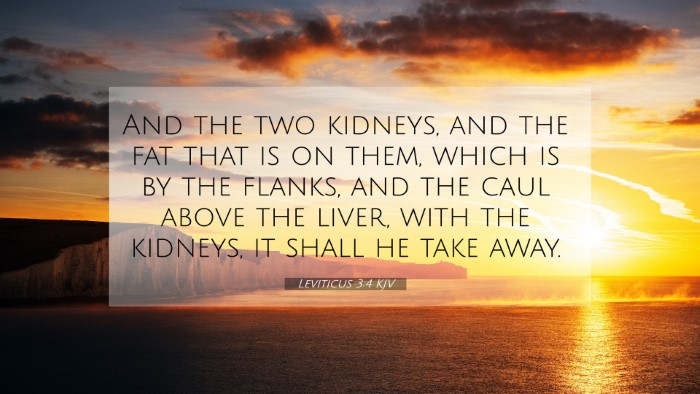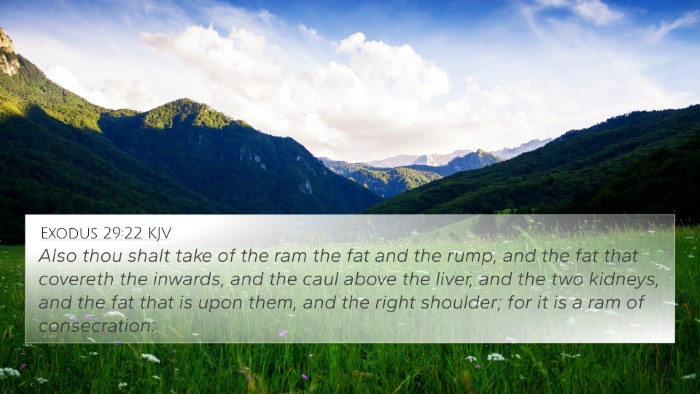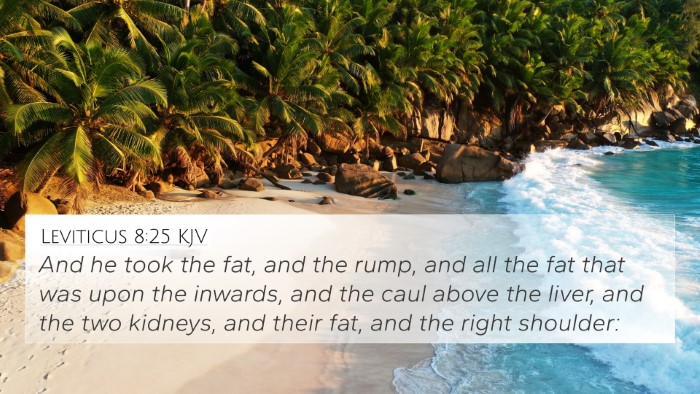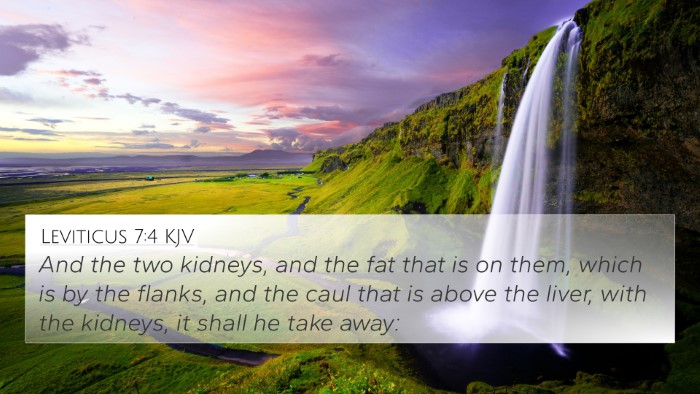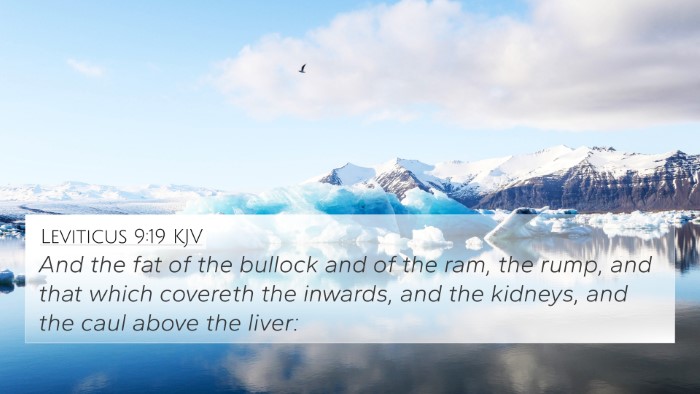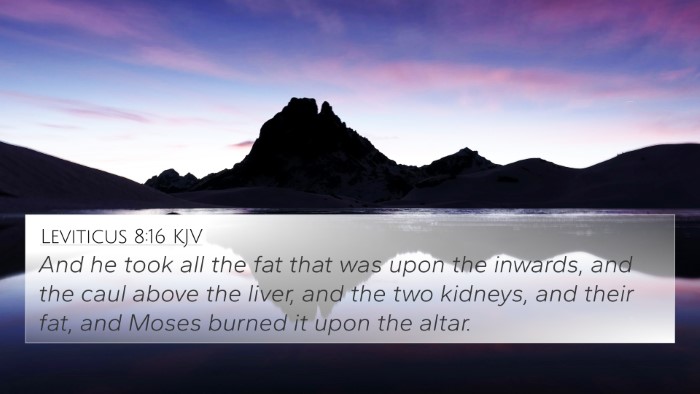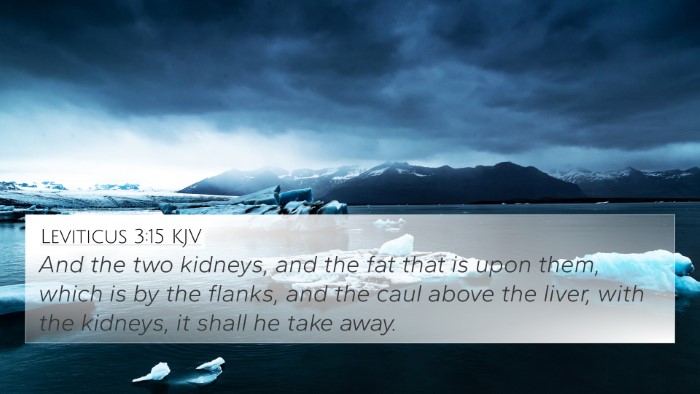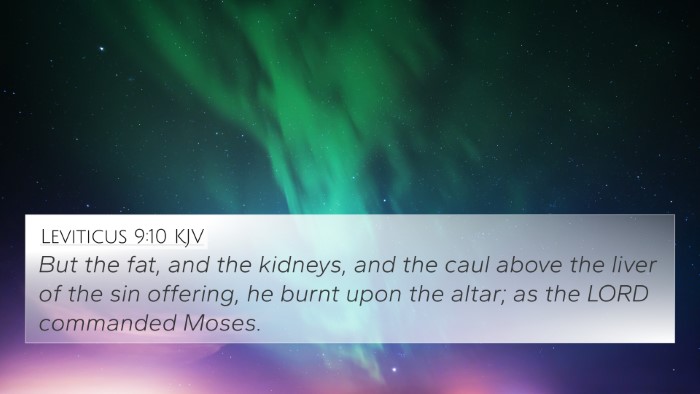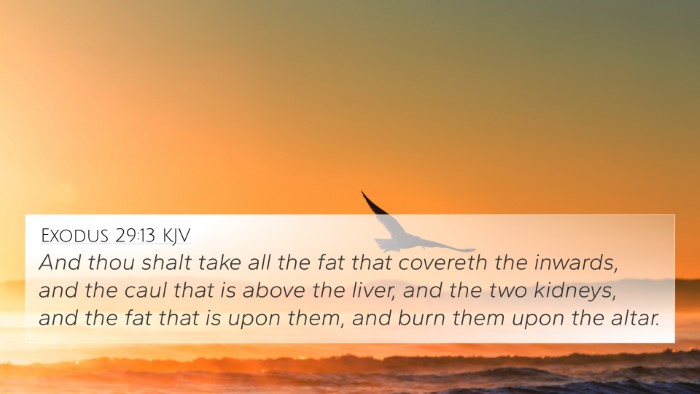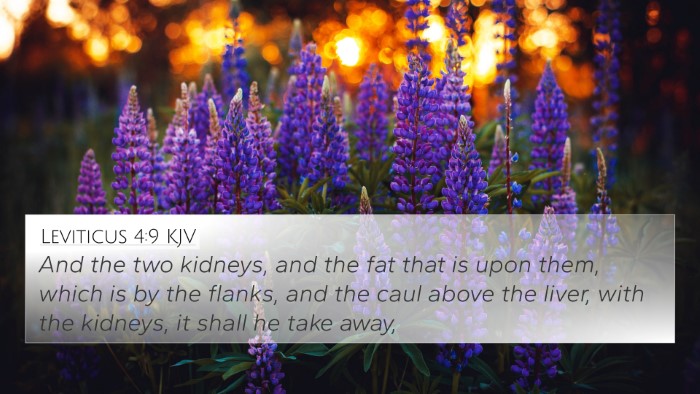Understanding Leviticus 3:4
Leviticus 3:4 is part of the Levitical laws concerning peace offerings, which provide significant insight into the nature of sacrificial systems in ancient Israel as well as theological implications for modern believers. This verse states:
“And the two kidneys and the fat that is on them, which is by the flanks, and the caul above the liver, with the kidneys, it shall he take away.”
Overview of Key Themes
This verse illustrates specific ritualistic details regarding the offerings made to God. The kidneys and the fat are of particular importance in sacrificial customs, symbolizing the quality and intent behind the offerings. Let’s explore several critical interpretations provided by notable biblical commentators:
- Matthew Henry: Henry emphasizes the significance of the kidneys as the seat of emotions, thus indicating that offerings must come from a place of sincerity and genuine feeling. He notes that the liver represents the vital force in a living being, thereby highlighting that what is offered to God should be the best and most valuable.
- Albert Barnes: Barnes recounts that the kidneys were often associated with the innermost thoughts or intents of a person. He posits that the act of presenting these specific organs demonstrates a deeper connection to purity and holiness in the context of communication with God. The meticulous detail in such offerings embodies an essential aspect of worship—honoring God with the finest of one's possessions.
- Adam Clarke: Clarke indicates that the instructions on the removal of the kidneys and fat emphasize a distinction between offerings. He interprets this as God signaling the need for sanctification and the separation of common from sacred. These practices served as foundational components for maintaining a holy community.
Bible Verse Cross-References
Leviticus 3:4 can be cross-referenced with several related biblical passages, fostering a deeper understanding of the interconnectedness of scripture. Here are some notable references:
- Genesis 4:4: Abel’s offering was accepted by God, showcasing the prerequisite of acceptable sacrifices.
- Leviticus 7:3: Further instructions on the peace offerings detail the importance of specific parts being designated for God.
- Hebrews 9:22: Establishes a theme on the necessity of blood for the forgiveness of sins, drawing parallels between Old Testament sacrifices and Christ's ultimate sacrifice.
- 1 Peter 2:5: Believers are described as a holy priesthood, offering spiritual sacrifices to God.
- Romans 12:1: Paul implores believers to present their bodies as living sacrifices, emphasizing the new covenant principles of worshiping God.
- Exodus 29:22: Discusses the offerings and their portions, establishing patterns for future generations.
- Psalm 51:16-17: Highlights God's disdain for empty sacrifices, pointing towards the heart's condition as essential for true worship.
Connections Between Bible Verses
When we analyze Leviticus 3:4 within the broader biblical context, we see a thematic link regarding the intent behind offerings and sacrifices. Several insights arise:
- Thematic Link: The significance of specific parts of animals in sacrifice reflects a deeper understanding of our heart and intentions in worship.
- Inter-Biblical Dialogue: The discussion of sacred offerings flows into the New Testament, where the focus shifts from physical to spiritual offerings, underscoring continuity in God's desire for sincere worship.
- Comparative Analysis: By comparing the Old Testament sacrificial system and the New Testament doctrines, one can see the evolution of understanding God's requirements for holiness and community.
Tools for Bible Cross-Referencing
To explore these connections further, various tools facilitate the study of Bible verses and their relationships:
- Bible Concordances: These resources list words and phrases found in the Bible, providing references for studies on sacrifice and atonement.
- Bible Cross-Reference Guides: Useful for tracing themes, these guides can help in understanding the narrative and theological motifs present in different scriptures.
- Cross-Reference Bible Study: Methods focusing on linking scriptures reveal thematic connections and layered meanings within Biblical texts.
- Bible Reference Resources: Various online and print resources provide insights and lists of verses that are thematically related to specific scriptures.
Conclusion
Leviticus 3:4 serves as an intricate part of the whole biblical narrative on worship and sacrifice. By understanding its details, and drawing connections between related verses, we appreciate the richness and depth of scripture. As believers, engaging in a cross-referencing study not only enhances comprehension but also strengthens our faith journey as we seek to understand God’s will and desire for true worship.
As you explore further, consider how to find cross-references in the Bible or identify connections between Old and New Testaments. The deeper your exploration, the more profound your understanding will become regarding God's enduring covenant with His people.
